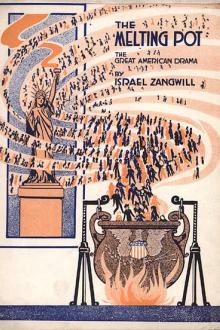No Modernism Without Lesbians, Diana Souhami [love books to read txt] 📗

- Author: Diana Souhami
Book online «No Modernism Without Lesbians, Diana Souhami [love books to read txt] 📗». Author Diana Souhami
There were problems over taxes and distribution in English-speaking countries so Bryher and Macpherson showed Foothills in Berlin. Pabst liked it. Through her friendship with Pabst, Bryher met Jewish artists and intellectuals imperilled by anti-Semitism and the rise of fascism. Pabst introduced her to Lotte Reiniger, the pioneer in animated film. Bryher wrote to H.D. that Reiniger made her films herself, in a room the size of their dining room at Territet, with a piece of glass, a movie camera ‘and an electric apparatus’. Bryher gave her money to finance her work and together they explored Berlin.
Hanns Sachs and analysis
Also through Pabst, Bryher met the psychoanalyst Hanns Sachs. He was adviser for Pabst’s 1926 silent film Secrets of a Soul, subtitled ‘A psychoanalytic film’. It explored the cause of neurosis and the psychopathology of jealousy and guilt. Its explanatory legend ran:
Inside every person there are desires and passions which remain unknown to ‘consciousness’. In the dark hours of psychological conflict, these ‘unconscious’ drives attempt to assert themselves. Mysterious illnesses arise from such struggles, the resolution and cure of which form the field of psychoanalysis.
Freud was asked to contribute but would not:
I do not believe in the possibility of anything good and useful coming of the project and therefore for the time being cannot give my authorization… I do not deny that I should prefer my name not to come into it at all.
Bryher began analysis with Hanns Sachs. Mainly she saw him in Berlin but during the summer they met in Switzerland. Her daily hour-long sessions with him first thing in the morning took place from 1928 to 1932. He lived in a small apartment at 7 Mommsenstrasse near the Kurfürstendamm – the most famous avenue in Berlin. His English was fluent. He charged his foreign analysands twenty marks, his German ones ten. ‘Analysis must have no morals only mirrors’, he told Bryher. She saw her analysis as liberation, a discovery of self, the uncovering of the repressions of her formative years:
The object of my search since I had been a child was absolute truth. Not to be believed was what I found hardest to bear. I could not have burst through the barriers that were holding me up without help. We tried to dig down to the bones of the past and to excavate memories in the process.
private ripples
A spread of ripples from stones in pools happened not just with POOL Productions but in the private lives of Bryher’s family too. Macpherson and H.D. had begun their affair in 1926, Bryher divorced McAlmon in 1927 and married Macpherson and adopted Perdita in the same year. They worked together on films and the magazine, but family connections were tenuous. Perdita had no choice about Bryher and Kenneth Macpherson becoming her adoptive parents; she stayed at different apartments, was sent to various schools, taken on trips to different countries. Bryher was conscientious and generous with money, but no one seemed to bother to find out who Perdita was.
Monkeys’ Moon and an abortion
In 1929, POOL Productions made the third of their short experimental films, Monkeys’ Moon. It lasted six minutes. Macpherson shot it in the grounds of Territet. H.D. and Bryher acted in it and it featured two of their pet monkeys, Lady and Tsme, a beetle, a watering can, the moon, a trombone, Bryher’s feet, stones and flower pots. The idea was to use dramatic lighting, montage and double or triple exposure to evoke psychological states, impressions, inner experience and tension. The moon cut through the sky, the monkeys were agitated, the beetle was on its back, water dripped from the can, there were shadows, feet walking… The intention was for film to interact with poetry and painting.7
Also in 1929, POOL published Film Problems of Soviet Russia by Bryher. Macpherson chose the illustrations. In it, Bryher condemned censorship, political intervention in the arts, and militarism. Of Eisenstein’s film Battleship Potemkin, she wrote: ‘Personally, as long as there is an army I should use Potemkin as an educational and propaganda film at Sandhurst and at Woolwich.’8
With Kenneth Macpherson and the writer and poet Robert Herring, she went to Iceland to shoot film for a new project, Borderline, but her consuming interest was psychoanalysis. Berlin was the city where, through extensive psychoanalysis, she delved into the wellspring of her personality. Homosexuality was visible in the cabarets and culture, in Pabst’s film Pandora’s Box and William Dieterle’s Sex in Chains. Magnus Hirschfeld’s Institute for Sexology defended homosexual rights. Bryher became a patron of the International Psychoanalytical Press, gave money to the cause and trained to become an analyst. She might have been one of the first lesbian psychoanalysts had the war not brought such plans to an end.
H.D. had no particular enthusiasm for film or Berlin. In London that year she published new poems in Imagist Anthology but she felt blocked in her work. She became absorbed in astrology and tarot card readings, which did not help her mental health. From Territet she wrote to tell Macpherson she had cut her hair even shorter – ‘I think it is so much more comfortable and nice’ – and that she was pregnant with his child. He panicked, told her she must come to Berlin, and that Hanns Sachs would arrange an abortion:
Brave, handsome, beautiful, sad, noble, furry dignified kitten, hurry up and come and have that star or starfish or star maiden or whatever it is removed. Just get on that train and tell itself its troubles are almost over and tell itself it myst bye a NAICE woman from now on.
Macpherson’s alarm was total. ‘No more “Normal” for Rover’, he said of himself. He needed little prompting to give up normal with H.D. or any woman. His preferred company and sex life was with homosexual men. He referred to H.D. ‘throwing three schizophrenic phits per day when asked to go anywhere but always going’. Nor was he convinced the child was his. H.D. had been ‘seeing’





Comments (0)